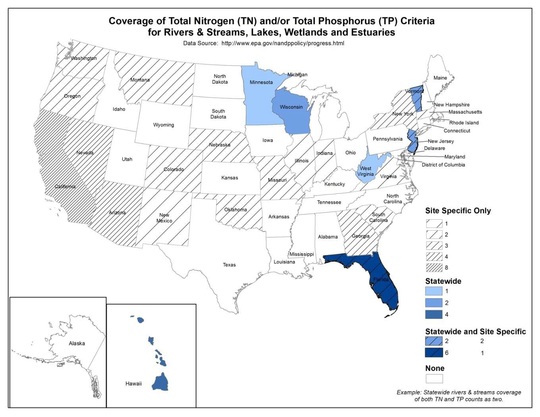FOR IMMEDIATE RELEASE: June 28, 2013
STATEMENT FROM DEP SECRETARY HERSCHEL T. VINYARD JR. REGARDING EPA ACTION TODAY ON NUMERIC NUTRIENT CRITERIA
TALLAHASSEE– Today, DEP’s implementation plan for Florida’s nutrient criteria were approved by the U.S. Environmental Protection Agency. EPA also filed a motion in the
federal court to amend the Consent Decree to reflect its determination that
further federal rulemaking is unnecessary given DEP’s rulemaking efforts.
Florida continues to fulfill the obligations reached in the path forward agreement in March to eliminate the need for continued dual rulemaking and secure the foundation for a singular, state-led solution for the state of Florida. The Department continues to set numeric nutrient criteria for virtually all waterbodies in the State furthering our position as a national leader in the adoption of these important standards.
We are gratified by the EPA's actions today which set us on a path to having effective, comprehensive numeric limits for our state waters. This action marks a significant step forward in protecting and restoring water quality across the state.
It is important to move past the rulemaking and into implementation because that is when change occurs to address our nutrient challenge in the state. DEP, especially our dedicated staff scientists, and EPA have been working diligently to position us as the only state in nation with comprehensive criteria set for all rivers, streams, lakes, springs, estuaries, and coastal waters. I am very proud of their efforts.
This is another example of how the environment wins when the hard work of scientists at DEP and EPA -- and not costly litigation -- improves Florida's water.
Background:
In March 2013, the Florida Department of Environmental Protection and the U.S. Environmental Protection Agency reached an agreement to continue the protection of Florida’s waterways from excess nitrogen and phosphorus pollution. This agreement, once implemented and completed, will be coupled with EPA’s prior approval in November of the Department’s adopted water quality standards. The result will be Florida having numeric nutrient standards for lakes, streams springs, estuaries and coastal waters, and all but nearly 1 percent of these waterways in the state.
In November 2012, EPA approved Florida’s numeric nutrient criteria for lakes, rivers, streams and springs, as well as estuaries from Clearwater Harbor to Biscayne Bay and the Florida Keys.
Late last year DEP adopted numeric nutrient criteria for Panhandle estuaries.
Earlier this month, the Environmental Regulation Commission unanimously approved numeric nutrient criteria for an additional 18 estuaries and 448 miles of open coastal waters, which includes the Loxahatchee River, Lake Worth Lagoon, Halifax River, Guana River/Tolomato River/Matanzas River, Nassau River, Suwannee River, Waccasassa River, Withlacoochee River, and Springs Coast (Crystal River to Anclote River). The action means the Florida Department of Environmental Protection has set rigorous nutrient criteria for more than 3,900 of the state’s estimated 4,290 coastal miles of estuaries, or 91 percent coverage.
State legislation also required under this agreement was recently signed into law by Governor Rick Scott, This legislation requires the Department to complete its nutrient criteria rulemaking for remaining estuaries and coastal waters by Dec. 1, 2014, and establishes interim nutrient standards for those remaining waters until then. The legislation further provides that state criteria will go into full effect when EPA withdraws all federal nutrient criteria rulemaking in Florida.
Data collection and analysis continues for the remaining nine percent of the estuaries, mostly in the Big Bend area of the state.
Florida taxpayers have invested millions of dollars to create the nation's most comprehensive rules controlling nutrients. These rules account for the diversity and complexity of Florida’s waters and afford local communities and private interests the tools essential to cleaning up and protecting rivers, lakes, estuaries, and springs. The Department is committed to working with affected stakeholders to finish the job.
For a copy of EPA's court filings, visit: http://www.dep.state.fl.us/secretary/news/2013/06/424main.pdf
For more information, visit http://www.dep.state.fl.us/water/wqssp/nutrients.

|